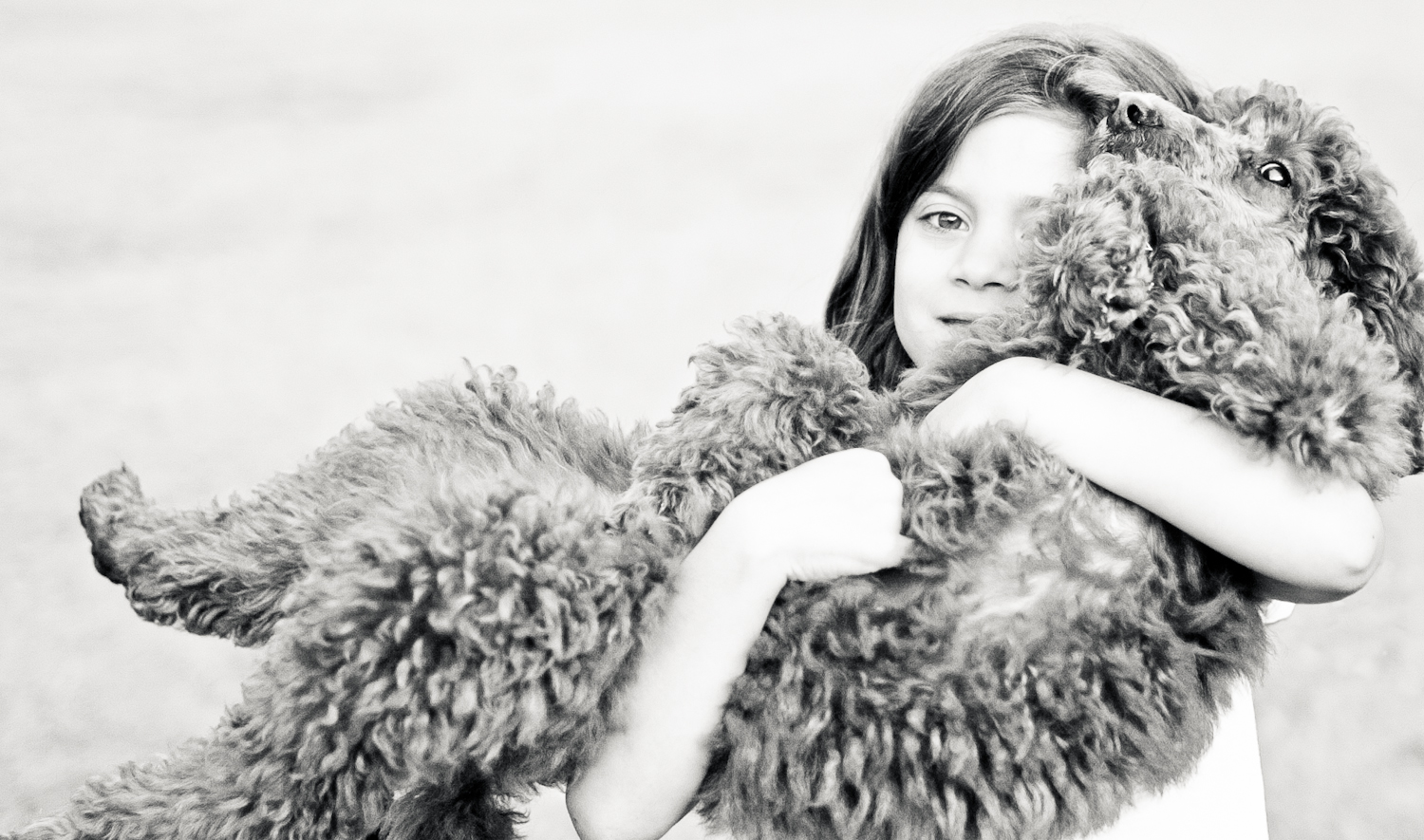An estimated 4 in 10 children begin life in a family with pets, and as many as 90 percent of all children live with a pet at some point during childhood, says Gail F. Melson, PhD.1
Whether it has fur, feathers or is a ï¬sh, studies show children who grow up with a pet grow up with a great set of perks in comparison to those who do not.2 It is important to learn about the beneï¬ts of pets for children and determine if a pet is right for your family.
Advantages of Pet Ownership
 Pets contribute to a child’s self-esteem and self-conï¬dence, lower stress, aid in the development of trusting relationships with others, develop non-verbal communication and compassion. They provide physical activity, affection, love and loyalty.
Pets contribute to a child’s self-esteem and self-conï¬dence, lower stress, aid in the development of trusting relationships with others, develop non-verbal communication and compassion. They provide physical activity, affection, love and loyalty.
The American Academy of Child & Adolescent Psychiatry says a child who learns to care for an animal, and treat it kindly and patiently, may get invaluable training in learning to treat people the same way.3
Other beneï¬ts of owning a pet show include:
- Providing life lessons, such as birth, illness, accidents, death and bereavement
- Helping develop responsible behavior in children who care for them
- Providing a connection to nature and teaching a respect for living things
- Providing a reason for exercise and activity
- Creating family harmony by bringing the family together to care for the pet4
Choosing an Appropriate Pet
 It is important to choose a pet that is right for your family, home and lifestyle:
It is important to choose a pet that is right for your family, home and lifestyle:
- Choose an animal whose needs can be met by your child. Dogs and cats require daily attention while ï¬sh, turtles, birds and hamsters require minimal care.5
- Choose an animal whose temperament ï¬ts your family. An easygoing pet is a good match for children.
- Consider allergies. Some people are allergic to skins, hairs or feathers of some animals so consult your pediatrician or local veterinarian for advice.
- Buy pets only from reputable breeders and shelters to reduce the risk of taking home an ill or diseased animal.
Caring for a Pet
Once your family has brought a pet home, it is important to discuss the needs of the animal and pet safety with your children. The following are also important to note once a pet is home:
- Young children under the age of 3 should be monitored with pets at all time
- Children under the age of 10 need assistance when caring for a large animal
- Parents should oversee the pet’s care at all times
- If children do not take care of the pet, parents must take over responsibility on their own
- Children should be gently reminded that animals, like people, need food, water and exercise
- Children will learn responsible pet ownership by observing their parents’ behavior
A pet is like another family member and brings so many beneï¬ts to children. Not only will it love your child unconditionally, but your child will love it too.

References
- 1 http://www.parents.com/parenting/pets/kids/pets-good-for-kids/
- 2 http://www.whattoexpect.com/kids-and-pets/beneï¬ts-of-pets.aspx
- 3 http://www.aacap.org/AACAP/Families_and_Youth/Facts_for_Families/Facts_for_Families_Pages/Pets_And_Children_75.aspx
- 4 http://www.pedigree.com/All-Things-Dog/Article-Library/The-Beneï¬ts-of-Growing-Up-with-Pets.aspx
- 5 http://www.parents.com/parenting/pets/kids/8-tips-on-getting-a-pet/?page=2
Photos
- 1 New Puppy | CC | by Greg Westfall
- 2 Lazy Cat | CC | by 55Laney69
- 3 Puppy Love by DeathToStockPhoto
- 4 Friends | CC | by Greg Westfall

















